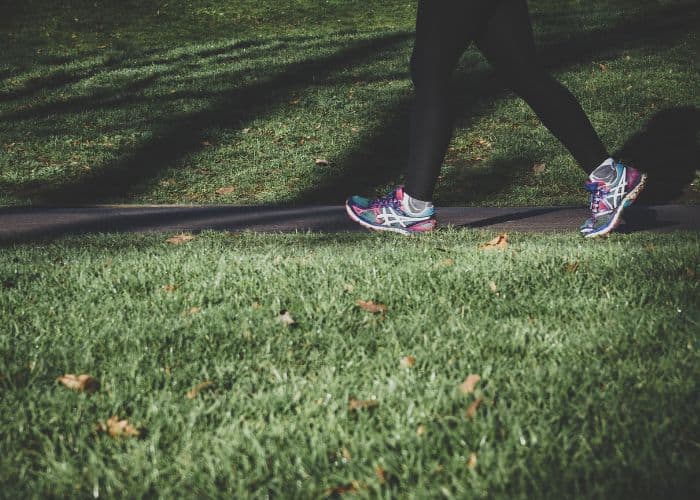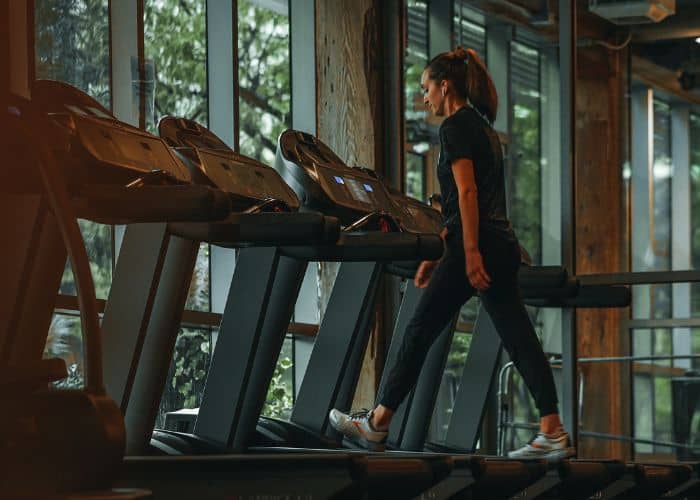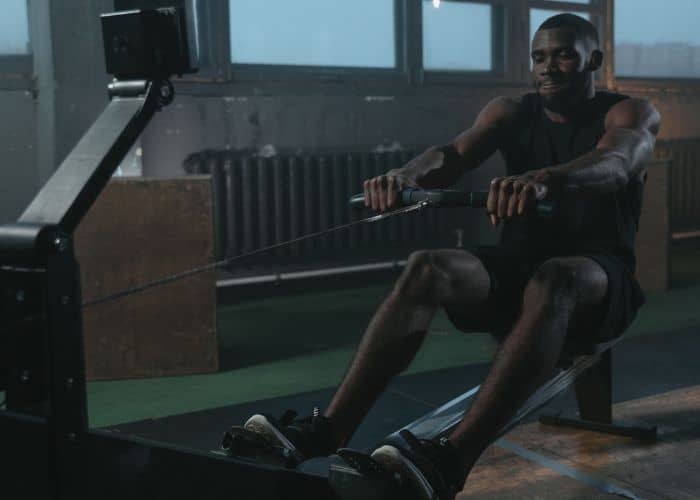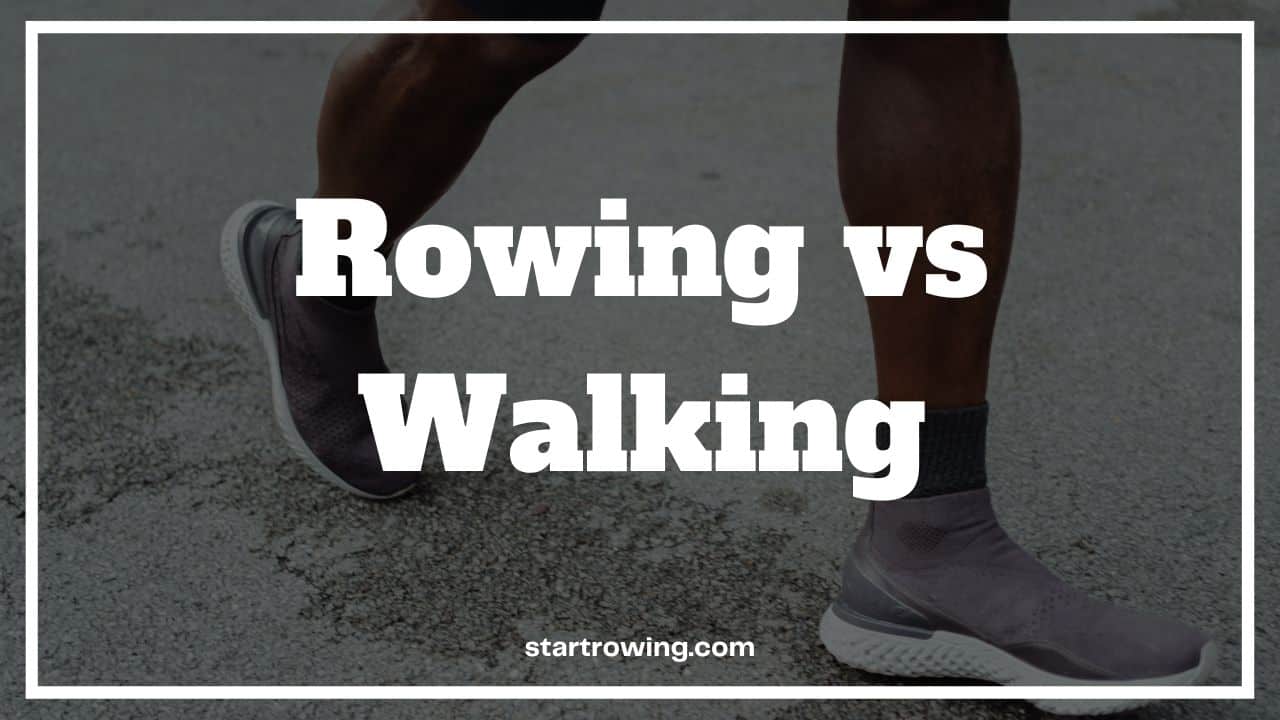When it comes to weight loss, many people default to walking as their exercise of choice. However, as a rower with years of experience in the sport, I’m here to tell you that rowing may actually be the better option.
Now, before you dismiss me as biased, let me explain why.
In this article, I’ll provide you with a comprehensive comparison of rowing vs walking for weight loss, highlighting the benefits and drawbacks of each.
As someone who has personally experienced the benefits of rowing, I believe it’s a great exercise option that often goes overlooked.
Table of Contents
So, let’s dive in and explore the reasons why rowing may just be the exercise you need to reach your weight loss goals and when walking may be a suitable option.
KEY TAKEAWAYS
- Both rowing machines and walking can be effective exercises for weight loss.
- Rowing machines provide a high-intensity, full-body workout that can burn more calories in less time compared to walking.
- However, rowing machines may not be suitable for everyone due to physical limitations or preferences.
- Walking can provide a low-impact workout that’s easy on the joints and can be a more enjoyable form of exercise for some individuals.
- Ultimately, the best exercise for weight loss is one that you enjoy and can stick to consistently.
- Incorporating variety in your exercise routine is important for optimal weight loss results.
Benefits of Walking for Weight Loss

Although not my favorite, walking can be a great exercise option for weight loss, especially for those who are new to exercise or have physical limitations. Here are some of the benefits of walking for weight loss:
- Low-impact exercise: Walking is a low-impact exercise that is easy on the joints, making it a great option for those with knee or joint problems.
- Accessible and requires no equipment: Walking requires no special equipment, and it can be done almost anywhere at any time. All you need is a comfortable pair of shoes and a safe place to walk.
- Improves cardiovascular health: Walking is an aerobic exercise that strengthens the heart and lungs and can help reduce the risk of cardiovascular disease.
- Easy to incorporate into a daily routine: Walking is a simple exercise that can easily be incorporated into your daily routine, whether it’s taking a stroll during your lunch break or walking to the store instead of driving.
- Burns calories and aids in weight loss: Walking burns calories and can aid in weight loss, especially if done consistently and at a brisk pace.
- Exposure to fresh air and sunlight: Walking outside can provide you with fresh air and sunlight, which can improve your mood and overall well-being.
- Varied terrain: Walking outside allows you to experience varied terrain, which can challenge your muscles in different ways and potentially lead to greater calorie burn.
- Free: Walking outside is free and requires no equipment, making it an affordable exercise option.
Overall, walking is a good exercise option for those looking to lose weight and improve their overall health. It’s low-impact, accessible, and easy to incorporate into your daily routine.
Drawbacks of Walking for Weight Loss
While walking can be a good option for certain people, there are also some drawbacks to consider:
- Limited intensity: Walking is a low-intensity exercise, which means that it may not be as effective at burning calories and losing weight as higher-intensity exercises.
- Plateaus: Over time, your body may become accustomed to walking, and you may hit a plateau in your weight loss progress.
- Limited muscle activation: Walking primarily targets the lower body muscles, which means that it may not be as effective at building overall muscle strength and power.
- Weather dependent: Walking outdoors can be weather dependent, which can make it difficult to stick to a consistent exercise routine. Unless you use a treadmill of course. But we’ll get to that.
- Boredom: Walking can become monotonous, which may lead to boredom and a lack of motivation to continue with the exercise.
While walking has its benefits, it’s important to consider these drawbacks when deciding if it’s the right exercise option for you.
If you’re looking for an exercise that can provide a higher-intensity workout and more muscle activation, you may want to consider other options. This is where the rowing machine steps in.
But first, I know many of you are screaming “what about the treadmill”. So let’s talk about rowing machines’ arch nemesis first.
Walking on a Treadmill

When it comes to walking for weight loss, you have two main options: walking outside or walking on a treadmill. Here are some of the benefits and drawbacks of walking on a treadmill:
Benefits:
- Consistent and controlled environment: Walking on a treadmill allows you to control the incline, speed, and duration of your workout in a consistent environment.
- Indoor option: Walking on a treadmill is an indoor exercise option, which can be beneficial during inclement weather or in areas with limited outdoor space.
- Safety: Walking on a treadmill can be safer than walking outside, particularly if you’re using a treadmill with safety features such as automatic stop mechanisms.
Drawbacks:
- Boredom: Again, walking on a treadmill can become monotonous, which may lead to boredom and a lack of motivation to continue with the exercise.
- Limited muscle activation: Walking on a treadmill primarily targets the lower body muscles, which means that it won’t be as effective at activating the muscles as rowing will.
- Cost: Treadmills can be expensive to purchase, and most gyms require a membership fee to use their equipment.
Overall, whether you choose to walk outside or on a treadmill depends on your personal preferences and circumstances. Both options have their benefits and drawbacks, so it’s important to choose the option that best fits your needs and goals.
Benefits of Rowing for Weight Loss

Okay now, let’s get into rowing!
Rowing is a great exercise option for weight loss, and here’s why:
- High-intensity exercise: Rowing is a high-intensity exercise that can burn a significant amount of calories in a short amount of time. It engages multiple muscle groups simultaneously, including the legs, core, back, and arms, making it an efficient exercise for weight loss.
- Low-impact exercise: Unlike some other high-intensity exercises, such as running or jumping, rowing is a low-impact exercise that puts less stress on the joints. This makes it a great option for individuals who may have joint pain or injuries.
- Builds muscle strength and endurance: Rowing not only burns calories, but it also helps to build muscle strength and endurance. The constant pulling motion engages the muscles in the upper and lower body, leading to greater muscle tone and definition.
- Full-body workout: As mentioned, rowing engages multiple muscle groups simultaneously, making it a full-body workout. This means that it can be an effective exercise for overall fitness, not just weight loss.
- Low risk of injury: Because rowing is a low-impact exercise, it has a lower risk of injury than some other high-intensity exercises.
Overall, rowing is a great exercise option for weight loss due to its high intensity, low impact, and full-body engagement. If you’re looking for an exercise that can help you burn calories, build muscle, and improve overall fitness, rowing is definitely worth considering.
Read more about the benefits of rowing.
Drawbacks of Rowing for Weight Loss
While rowing machines can be a highly effective exercise for weight loss, they do have some drawbacks that are worth considering:
1. Cost: As with a treadmill, one of the biggest drawbacks of using a rowing machine is the cost. The best rowing machines can be expensive, and they may not fit within everyone’s budget. Additionally, if you’re using a machine at a gym, you may need to pay for a membership or access to the facility.
2. Learning Curve: Rowing machines require proper form and technique in order to be effective and avoid injury. For beginners, this learning curve can be frustrating and may discourage them from continuing. However, with proper instruction and practice, rowing can become a rewarding and enjoyable form of exercise.
Check out our article on how to use a rowing machine to learn the perfect rowing technique.
3. Intensity: Rowing machines can be a very intense exercise, especially for beginners. The continuous motion of rowing can be tiring, and it may be difficult to maintain proper form as fatigue sets in. This can lead to injuries or burnout if proper precautions are not taken.
Personally, I think these potential drawbacks are weak, and I could push back on all of them. But I guess I had to include some.
If cost is an issue, save up and get yourself a Concept2 RowERG. These machines are quality and will last you a very long time. They are way cheaper than the newer interactive rowing machines and so much better than the cheaper ones that they’re worth spending a little extra on. They´re also a great investment as they hold their value.
As with everything in life, the technique will come with practice. Follow our guide and you´ll become a pro in no time.
And as for the intensity, you can control this to some degree based on how hard you row. This does vary depending on the type of rowing machine you are using though. But you will adapt and get fitter over time. Which is kinda the whole point.
So if done properly, rowing machines can be an excellent exercise for weight loss. It’s important to start slowly, focus on proper technique, and gradually increase the intensity and duration of your workouts over time.
Which is Better for Weight Loss: Rowing or Walking?
Both rowing machines and walking can be effective exercises for weight loss. However, if you’re looking to maximize your weight loss efforts, rowing machines may be the better choice. Here are a few reasons why:
High-Intensity, Low-Impact Exercise
Rowing machines provide a high-intensity workout that can burn more calories in a shorter amount of time compared to walking. This is because rowing engages multiple muscle groups, including the legs, core, and upper body, all while providing a low-impact exercise that’s easy on the joints. By contrast, walking only engages the lower body and may not be as effective for weight loss.
Improved Cardiovascular Health
Rowing machines provide a great cardiovascular workout that can improve heart health and endurance. This is because rowing requires both strength and endurance, which can help to improve the overall fitness of your cardiovascular system. While walking can also provide cardiovascular benefits, it won’t be as intense or effective as rowing for improving overall fitness.
Time Efficiency
If you’re looking for a quick and efficient workout, rowing machines can provide a great option. Because rowing engages multiple muscle groups at once, it can burn more calories in less time than walking. This can be especially beneficial for those with busy schedules who want to maximize their workout time.
My Personal Experience
As an expert rower and fitness professional I have found that rowing machines provide a challenging and rewarding workout that can help to improve overall fitness and burn more calories than other forms of exercise.
Personally, I’ve found rowing to be an engaging and challenging workout that has helped me achieve my fitness goals.
One of my favorite things about rowing machines is the full-body workout they provide. I can feel my muscles working from my legs all the way up to my arms and back. This not only makes the workout more intense, but it also helps to burn more calories and fat.
Additionally, rowing machines provide a low-impact exercise that’s easy on the joints. As someone who has had knee problems in the past, this is a huge benefit for me. I can get a great workout without worrying about aggravating my knee pain. Overall, if you’re able to use a rowing machine, I highly recommend it as a great option for burning fat and improving overall fitness.
I should add that you don´t need to stick to only rowing. Incorporating other exercises, such as walking or strength training, can help to balance out your training.
Ultimately, the best exercise for weight loss is one that you enjoy and can stick to consistently. Both rowing machines and walking can be effective options, so it’s up to you to determine which one fits your lifestyle and goals best.
Comparison of Calorie Burn and Weight Loss Potential
Rowing machines burn more calories in less time compared to walking. According to Harvard Health, a 185-pound person can burn around 311 calories in 30 minutes of moderate rowing, while walking at a moderate pace for 30 minutes burns around 178 calories. However, calorie burn depends on a variety of factors, including age, weight, and intensity of exercise but its safe to assume the rowing machine wins here.
In terms of weight loss potential, both rowing machines and walking can help to burn calories and promote weight loss when combined with a healthy diet. However, rowing machines may be more effective for those looking to lose weight quicker.
Individual Preferences and Goals
I’ve touched on this already but when choosing an exercise for weight loss, it’s important to consider your individual preferences and goals. Some people may prefer the low-impact nature of walking, while others may enjoy the challenge and variety of rowing. Additionally, if you have any injuries or physical limitations, one exercise may be more suitable than the other.
Consistency is king! If you dread rowing and find walking to be a more enjoyable form of exercise, then walking may be the better choice for you. The key is to find an exercise that you enjoy and can incorporate into your daily routine.
Importance of Incorporating Variety in Exercise Routine
It’s important to incorporate variety in your exercise routine for optimal results. Doing the same exercise over and over can lead to a plateau in weight loss and can be boring and demotivating.
Incorporating a variety of exercises, such as walking, strength training, and yoga can help to prevent boredom and provide a well-rounded workout that targets multiple muscle groups.
This can lead to greater weight loss and overall fitness benefits.
Before You Go…
Thanks for reading this article on rowing vs walking for weight loss. I hope it’s given you some valuable insights into the benefits and drawbacks of each exercise. If you’re interested in learning more about rowing machines and how they compare to other types of cardio equipment, be sure to check out our other articles on the topic.
We also have articles that explore the many benefits of rowing machines beyond weight loss, so be sure to check them out.
- Benefits of rowing
- Is rowing good for your back?
- Rowing machine transformations
- How does rowing work your abs
FAQ’s
Is rowing better than walking?
Both rowing and walking can be effective exercises for weight loss, but which one is better depends on individual preferences and goals. Rowing provides a high-intensity, full-body workout that can burn more calories in less time compared to walking. However, rowing may not be suitable for everyone due to physical limitations or preferences. Walking provides a low-impact workout that’s easy on the joints and can be a more enjoyable form of exercise for some individuals. Ultimately, the best exercise for weight loss is one that you enjoy and can stick to consistently.
Do rowing machines burn more calories than walking?
Yes, rowing machines can burn more calories in less time compared to walking. This is because rowing provides a high-intensity, full-body workout that engages multiple muscle groups and increases heart rate and oxygen intake. By contrast, walking primarily targets the lower body and may not be as effective for burning calories and fat. However, it’s important to choose an exercise that you enjoy and can stick to consistently, as this is key to achieving your weight loss goals.
How do rowing machines compare to other types of cardio equipment for weight loss?
Rowing machines can be an effective form of cardio equipment for weight loss and overall fitness. They provide a unique full-body workout that can burn more calories in less time compared to other types of cardio equipment like treadmills or stationary bikes.


